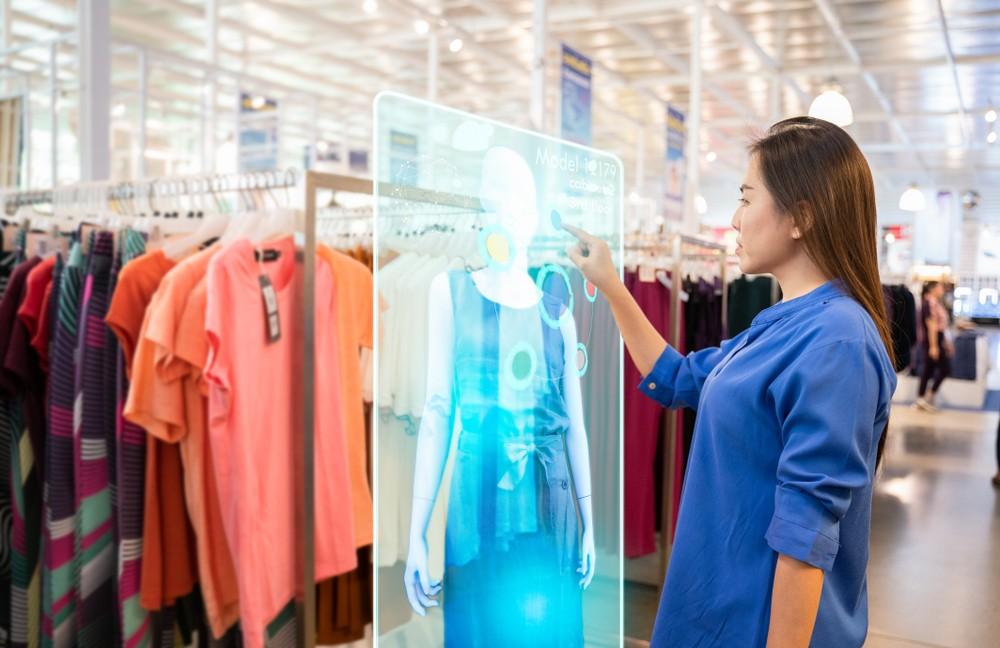The fashion industry, which is renowned for its unwavering quest for innovation, has accepted the transformative power of artificial intelligence (AI). This is hardly surprising in a world where technology is seamlessly woven into every aspect of our daily lives. AI is reinventing the very essence of style, improving efficiency, and creating trends in every facet of the fashion industry—from design studios to retail spaces.
Creative Innovation and Design
The potential of AI to redesign the creative process is what drives its influence on the fashion industry. Designers are using AI algorithms in increasing numbers to help them create original, cutting-edge designs. In order to forecast the next big thing, businesses like IBM and Google have created artificial intelligence (AI) systems that examine enormous datasets of social media, fashion trends, and past styles. This data-driven method guarantees a sophisticated understanding of customer preferences while speeding up the design process.
Glamor and Efficiency Combined
Through the creation of wearable technology and smart fabrics, AI is beginning to permeate the very fabric of fashion, moving beyond the drawing board. Textile innovations that regulate temperature, change color, and even have health-monitoring sensors integrated into clothing are becoming progressively more widespread. In order to maximize these fabrics’ functionality and make them responsive to user demands and environmental stimuli, artificial intelligence (AI) algorithms are essential.
Personalized Shopping Experiments

Personalized shopping experiences are among the most obvious ways artificial intelligence is changing the fashion industry. The days of generic recommendations are long gone; these days, AI-powered systems gather shopping suggestions based on personal preferences, past purchases, and even interactions on social media.
Large online retailers are using machine learning algorithms to evaluate enormous volumes of consumer data so they can customize their products to each individual customer’s preferences. AI-powered virtual stylists offer real-time fashion advice, recommending looks that suit the customer’s preferences while also staying up-to-date with emerging trends.
Optimization of the Supply Chain
Keeping up with customer demands while reducing waste is an ongoing challenge in an industry known for its rapid pace. Here’s AI, supply chain optimization’s unsung hero. Artificial intelligence (AI) algorithms are generating a symphony of efficiency throughout the whole fashion supply chain, from forecasting demand trends to optimizing production processes.
Accurate demand forecasting is a constant source of frustration for retailers, resulting in surplus inventory and overproduction. Equipped with predictive analytics, artificial intelligence can produce remarkably precise demand forecasts by examining consumer behavior, market dynamics, and even external factors such as meteorological patterns. This keeps extra inventory from building up and guarantees that popular items are available as and when they are needed.
Sustainability and Ethical Fashion
As the fashion industry struggles with its environmental impact, artificial intelligence is becoming a major force in encouraging moral and sustainable behavior. The utilization of machine learning algorithms is being implemented to monitor and enhance resource utilization, ensuring that all stages of the manufacturing process comply with environmentally sustainable practices.
Through the identification of substitute textiles and production techniques that have the least negative effects on the environment, AI is also helping to develop sustainable materials. AI is accelerating the fashion industry’s transition to a more sustainable and environmentally friendly future through projects like recycling and developing biodegradable textiles.
Artificial intelligence’s role in the fashion industry is set to become more significant, making it an essential act rather than a mere afterthought. AI is revolutionizing the fashion industry, bringing in a new era where creativity and technology work together to shape the very fabric of expression and style, from the design studio to the store aisle.



